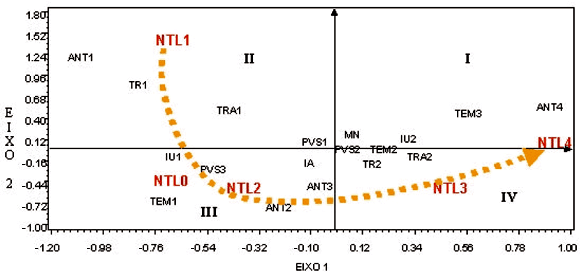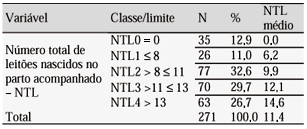An epidemiological study was performed with risk factors associated to the reproductive performance of the swine female. The objective was to identify risk factors with higher impact over the production. Ten piglet producers or complete rearing farms were surveyed for data collection on genetic, feeding, sanitary status, facilities and management practices of a total of 271 females. Descriptive analysis, multiple correspondence analysis and hierarchic ascending classification of the females were performed. The results showed that 236 (87.1%) sows had an average of 11.4± 2.8 piglets per pregnancy, while 31 (11.4%) returned to oestrus, 3 (1.1%) presented abortions and 1 (0.4%) showed false pregnancy. The variables presenting better ranking of the sows, according to the litter size, were previous reproductive history, presence of urinary infections, rectal temperature at the day of mating and at four subsequent days, length of mating, method of fertilization and seropositivity for porcine parvovirus. The results suggest that an improvement on reproductive performance is possible by identification followed by correction of the risk factors of higher impact.
Swine; risk factors; reproduction; litter size, survey





